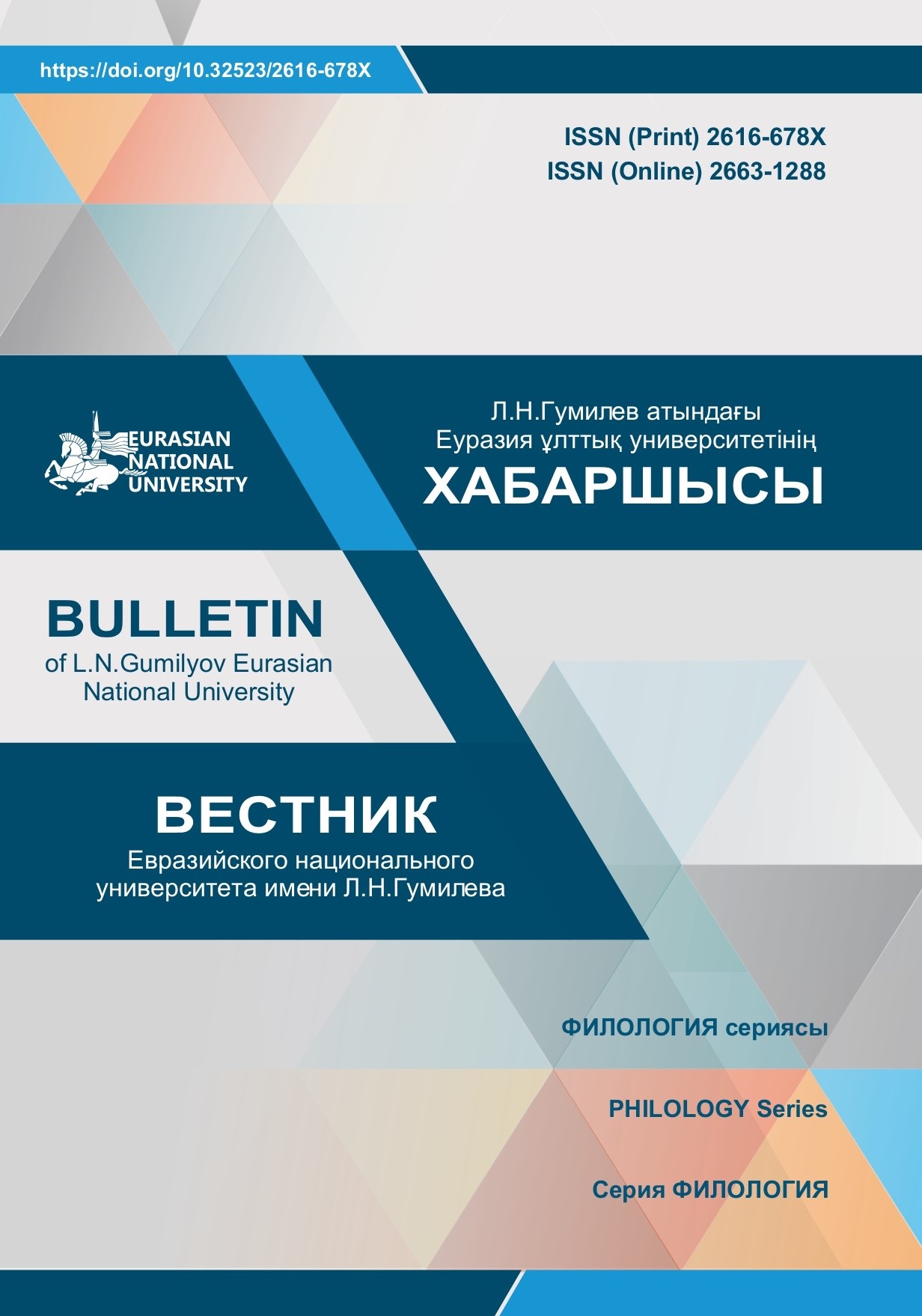Features of Phraseological Units Related to Human Respiratory System in Kazakh and Turkish
Views: 161 / PDF downloads: 80
DOI:
https://doi.org/10.32523/2616-678X-2019-128-3-146-152Keywords:
linguistics, anatomy, internal organism, concept, respiratory system, phraseology, somatismAbstract
Currently, set expressions, reflecting the special richness of the language, considered
as the eternal language of “Migilik Yel”, are becoming the subject of study in various aspects of the Kazakh
linguistics. However, almost all the aspects have been previously investigated. This is primarily associated
with anatomical names, including changes associated with the respiratory system, which previously did
not become the subject of a special study. This article analyzes in detail the features of using the lexical- stylistic layer of the Kazakh and Turkish languages. The classification of set expressions related to the
names of the respiratory organs in these languages, as well as to significant groups from the point of view
of the human factor, was considered a rational method for determining their internal semantic features.
The article was written in order to determine the place of anatomical names in the modern Kazakh literary
language, reflecting the specifics of individual names of somatic phraseological units associated with the
names of internal organs. For this, the method of dividing set expressions into semantic groups was used.
That is, the fact that they did not lose their status in historical eras and reached modern literary languages
proved that these two branches were not separated from each other.







